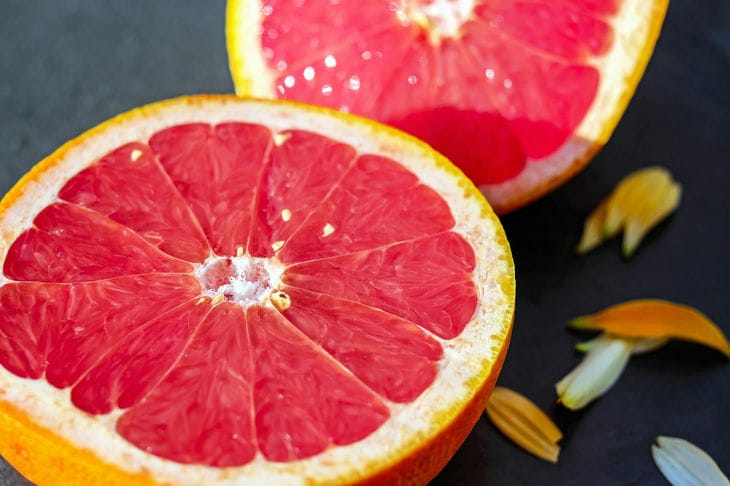The grapefruit is a variety of tree that resulted from crossing the largest lemon tree with the Chinese orange tree in the Antilles.
It was brought from Asia, where it was originally grown, by Captain Shaddock in the second half of the 17th century. It spread from England to continental Europe.
It is not grown in our country, it is imported, for example, from Spain or Morocco. It is also grown in Israel or the USA.

Grapefruit
Grapefruit is an evergreen tree or shrub that can grow up to fifteen feet tall.
Its young branches have distinct sharp thorns. Large white flowers grow singly or in grape-like inflorescences.
The fruit has a bitter taste. Its juicy pulp contains a number of important substances. These include vitamin C (contained in large quantities), vitamin P (bioflavonoids), rutin, vitamin B1 (thiamine), calcium, glycoside naringin (responsible for its bitter taste), galacturonic acid, pectin, vitamin K, potassium or magnesium.
Substances contained in grapefruit and their effects
We can note some positive properties of the substances they contain for our health.
Vitamin C supports immunity and innate immunity.
Galacturonic acid has a beneficial effect on blood vessels (helps dissolve calcium deposits and reduce cholesterol levels).
Pectin helps lower blood sugar levels, and its presence in the diet helps prevent certain types of cancer.
Vitamin B1 strengthens nerve functions, improves memory, concentration, etc.
Vitamin K plays an important role in the blood clotting process.
Rutin helps to strengthen the strength and elasticity of blood vessels and veins.
Potassium is important, among other things, for the proper functioning of the heart and blood circulation.
Magnesium is used for muscle spasms, but it is also important for proper heart function or for relieving fatigue and nerve problems.
Calcium is important for the proper formation of bones and teeth, but it is also involved in the transmission of nerve impulses to muscles.
Previously we talked about what to do with stale tangerines .








